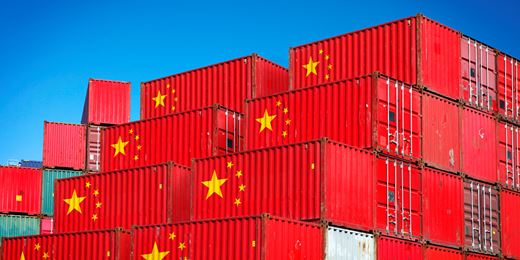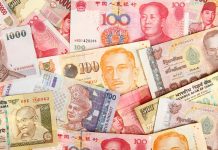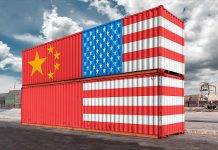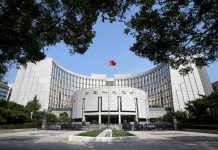
BEIJING: China’s economic growth cooled to its weakest pace since the global financial crisis in the third quarter, raising pressure on Beijing to step up policy support as a years-long campaign to tackle debt risks and the trade war with the United States began to bite.
Chinese authorities are trying to navigate through numerous challenges, as the trade war fears have sparked a blistering selloff in domestic stock markets and a steep decline in the value of the yuan versus the dollar, heightening worries about the growth outlook.
The economy grew 6.5 percent in the third quarter from a year earlier, slower than 6.7 percent in the second quarter, the National Bureau of Statistics said on Friday.
The GDP reading was the weakest year-on-year quarterly growth since the first quarter of 2009 at the height of the global financial crisis.
After another big decline in Chinese stocks on Thursday, policymakers sought to soothe markets, with central bank governor Yi Gang saying the recent stock market fluctuations are largely driven by investor sentiment and equity valuations are not in line with economic fundamentals.
After falling more than 1 percent in early Friday trading, the Shanghai Composite index was back in the black following the comments.
Third quarter growth was dragged down by the weakest factory output since February 2016 in September as automobile makers cut production by over 10 percent amid a sales slowdown.
On a quarterly basis, growth slowed down to 1.6 percent from a revised 1.7 percent in the second quarter, in line with expectations of 1.6 percent growth.
Importantly, second-quarter sequential growth was revised down from the previously reported 1.8 percent, suggesting the economy carried over less momentum into the second half than many analysts had expected.
Recent economic data have pointed to weakening domestic demand with softness across factory activity to infrastructure investment and consumer spending, as a multi-year crackdown on riskier lending and debt has pushed up companies’ borrowing costs.
Before the data release, economists had expected China’s full-year growth to come in at 6.6 percent this year – comfortably meeting the government’s 6.5 percent target – and 6.3 percent next year.
But following the data, some say growth could slow even more dramatically next year.
Beijing and Washington have slapped tit-for-tat tariffs on each other in recent months and plans for bilateral trade talks to resolve the dispute have stalled, triggering a domestic equities rout and putting pressure on China’s already softening economy and weakening currency.
China’s exports unexpectedly kicked into higher gear in September, largely as firms front-loaded shipments to dodge stiffer U.S. duties. But the stronger sales drove a record trade surplus with the United States that could inflame the already-heated dispute between the two economic superpowers.
Separate data on Friday showed China’s factory output growth weakened to 5.8 percent in September from a year earlier, missing expectations while fixed-asset investment expanded at a slightly faster-than-expected 5.4 percent in the first nine months of the year.
Infrastructure investment rose 3.3 percent year-on-year for Jan-Sep, slower than 4.2 percent growth in the first eight months of the year.
Retail sales rose 9.2 percent in September from a year earlier, bouncing back after several months of lacklustre growth.
Faced with a cooling economy, stock market wobbles and a yuan currency under pressure, policymakers are shifting their priorities to reducing risks to growth by gradually easing monetary and fiscal policy.
Last week China’s central announced the fourth reserve requirement ratio (RRR) cut this year, stepping up moves to lower financing costs amid concerns over the economic drag from the trade dispute with the United States.
And more support steps look likely, analysts say, as China starts to bear the full brunt of the trade war with the United States.






